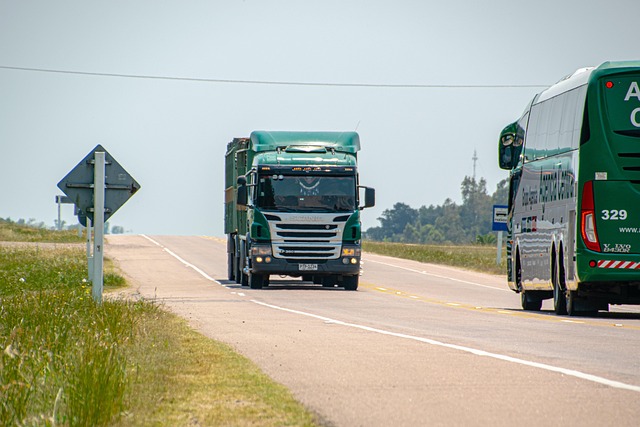Looking to register your car in California? This comprehensive guide walks you through every step, from understanding crucial registration requirements to utilizing a VIN verifier to check your vehicle’s history. Gather essential documents, complete the online or in-person process, and pay fees promptly. We’ll break down each phase, ensuring a smooth experience. Plus, learn how a VIN verifier can protect against potential issues, making car registration in California an efficient, worry-free process.
- Understand California Car Registration Requirements
- Gather Necessary Documents for Registration
- Use VIN Verifier to Check Vehicle History
- Complete Online or In-Person Registration Process
- Pay Registration Fees and Receive Plate Assignments
Understand California Car Registration Requirements

Before registering your car in California, it’s crucial to understand the state’s specific requirements for vehicle registration. One key aspect is ensuring that your car’s Vehicle Identification Number (VIN) is verified and accurate. The VIN is a unique code that identifies your vehicle, and it plays a vital role in the registration process. In California, a vin inspection or mobile vin verification is often required to confirm the vehicle’s authenticity and history, helping to prevent fraud and ensuring compliance with state regulations.
This process typically involves utilizing specialized tools to cross-reference the VIN with national databases, providing detailed information about the car’s past ownership, maintenance records, and any reported accidents or issues. Mobile vin verification services, for instance, allow you to get this critical check done conveniently at your location, making the registration process smoother and more efficient.
Gather Necessary Documents for Registration

Before you begin the registration process, make sure to gather all the essential documents required by the California Department of Motor Vehicles (DMV). This includes your vehicle’s Registration Application (Form DV-1), which can be obtained online or in person from a DMV field office. Along with this form, you’ll need to provide proof of identity and residency, such as a valid driver’s license or state ID card, along with any necessary documentation like utility bills or lease agreements to prove your California residence.
Additionally, the VIN (Vehicle Identification Number) verifier is a crucial component in the registration process. You can perform this check using a mobile vin verification service or through a vin inspection conducted by a certified professional. This step ensures that your vehicle’s history is accurate and reported correctly, which is essential for a smooth registration experience.
Use VIN Verifier to Check Vehicle History

Before you register your car in California, it’s crucial to check its history using a reliable VIN Verifier. This step is essential as it allows you to uncover any hidden issues or past accidents that could affect the vehicle’s safety and value. A simple online search or mobile vin verification service can provide you with detailed information about the car’s previous ownership, maintenance records, and any reported damages.
Using a mobile vin verifier app is an efficient way to complete this task since it offers on-demand access to comprehensive vehicle history reports. These apps enable you to quickly enter the car’s unique Vehicle Identification Number (VIN) and gain instant insights into its past. By taking advantage of modern technology, such as these mobile vin inspection tools, you can ensure a smoother registration process and make an informed decision about your new or used California vehicle.
Complete Online or In-Person Registration Process

In California, registering your car involves either completing a fully online process or visiting a DMV office in person. Both methods require you to gather essential documents and provide accurate information. The initial step is to ensure your vehicle meets all safety and emissions standards, which can be verified through a VIN inspection or by using a mobile VIN verifier.
For the online method, you’ll need a valid driver’s license, proof of insurance, and your vehicle’s registration fee. You’ll input your data and your Vehicle Identification Number (VIN) into the state’s official website. Alternatively, visiting a DMV office involves scheduling an appointment, bringing similar documents, and undergoing a VIN inspection to confirm your vehicle’s authenticity.
Pay Registration Fees and Receive Plate Assignments

After completing the registration application and providing all necessary documents, the next step is to pay the required registration fees. These fees cover various costs associated with vehicle registration, including administration, road usage, and environmental programs. You can typically pay these fees online or at a California Department of Motor Vehicles (DMV) office. Once your payment is processed, the DMV will assign you license plates for your vehicle.
For a smoother process, consider utilizing mobile vin inspection or mobile vin verification services, which allow for convenient and efficient plate assignments. These services use a vin verifier to ensure the accuracy of your vehicle’s information, providing an additional layer of precision during registration. This modern approach can save you time and effort, especially if you’re busy or have limited mobility.
Registering a car in California involves understanding key requirements, gathering essential documents, utilizing a VIN verifier for vehicle history checks, completing an online or in-person registration process, and paying fees. By adhering to these steps and leveraging tools like a VIN verifier, you can ensure a smooth and compliant car registration experience.
